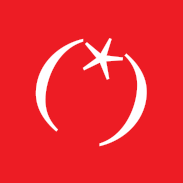Gaza, A Stain That Will Remain
In previous visual comments for Politico and Dnevnik, I pointed out the tragic consequences of the Hamas attack on Israel, but this yesterday I was pointing out the tragedy of the massive collateral victims of the 35-day offensive on Gaza. So far, 11,078 Palestinians have been killed in Israeli retaliatory attacks, including 4,506 children. 27,490 people were injured. Even if the invasion stopped at this point, the number of indirect casualties would continue to rise. 21 hospitals have stopped working, many more health centers are closed, and there are problems with the delivery of essential food and water. The psychological consequences will also be terrifying, both for the survivors and later for their descendants. Such an event marks generations.
The stain that will remain
The topic is sensitive, so it must be treated responsibly. That's right, after a period of hard-to-negotiate peace, this time Hamas attacked military and civilian facilities in Israel. As I have an Israeli friend from the Tel Aviv area, I was confronted first-hand with the horror they experienced on October 7th. Most of the town lost someone they knew, friends, family members. A good month after the attack, they are still in a state of shock.
It is just as important to show the tragedy of the enormous number of collateral victims of the Israeli retaliatory military offensive.
The international community, including the EU, failed with the response. This stain will remain, just like the one in Srebrenica.
The stain that will remain
The topic is sensitive, so it must be treated responsibly. That's right, after a period of hard-to-negotiate peace, this time Hamas attacked military and civilian facilities in Israel. As I have an Israeli friend from the Tel Aviv area, I was confronted first-hand with the horror they experienced on October 7th. Most of the town lost someone they knew, friends, family members. A good month after the attack, they are still in a state of shock.
It is just as important to show the tragedy of the enormous number of collateral victims of the Israeli retaliatory military offensive.
The international community, including the EU, failed with the response. This stain will remain, just like the one in Srebrenica.
How the cover came about:
The motif of the cover is relatively simple and direct, hence the building block (blood) must be presented authentically. As I quickly discovered through experimentation, blood has a specific color and viscosity that each of us recognizes. There are no shortcuts here. After a two-day process, I ended up with a mixture of 40 percent forest and acacia honey, 40 percent red wine, the rest made up of beetroot juice, and a hint of red color. I mixed, boiled, stirred, strained the mixture, syringed it into a bottle, and then pipetted it from various heights (40-60 cm) onto unprinted newsprint rotary paper.
Yes, even the shapes that drops of blood take when they fall on a surface are well known to us. The absorbency of newsprint is also specific, which is why I got enough unprinted bundles from Dnevnik.
Since the stain seeps through the entire number of Objektiv supplement, I prepared the title motif, as well as 23 different motifs of the exclamation point that seeped through.
The motif of the cover is relatively simple and direct, hence the building block (blood) must be presented authentically. As I quickly discovered through experimentation, blood has a specific color and viscosity that each of us recognizes. There are no shortcuts here. After a two-day process, I ended up with a mixture of 40 percent forest and acacia honey, 40 percent red wine, the rest made up of beetroot juice, and a hint of red color. I mixed, boiled, stirred, strained the mixture, syringed it into a bottle, and then pipetted it from various heights (40-60 cm) onto unprinted newsprint rotary paper.
Yes, even the shapes that drops of blood take when they fall on a surface are well known to us. The absorbency of newsprint is also specific, which is why I got enough unprinted bundles from Dnevnik.
Since the stain seeps through the entire number of Objektiv supplement, I prepared the title motif, as well as 23 different motifs of the exclamation point that seeped through.
The last in the chain of execution is reproduction in print. Last night, I was allowed to control the application of colors and the accuracy of the print of the four-color rotary print.
This time, the conceptual design required good coordination and cooperation of the team. I got both. I got the order on Tuesday afternoon, we met with a team of six on Wednesday. On Thursday we received the test prints, where we checked the appropriateness of the red color and the legibility of the text that appears in the motif on all pages, on Friday around noon I submitted all 24 files to the office.
The team was: art director Silvija Černe, editor in chief Miran Lesjak, implementation designer Vid Brezočnik, brainstorming help Jernej Žumer & print suppervisor Jernej Potočnik.
